A day trip to the Hoverter and Sholl Box Huckleberry Natural Area in the Tuscarora State Forest was a delight for this first-time visit. Access is about a half-mile down Huckleberry Road from Route 34, just south of New Bloomfield, Perry County, Pennsylvania.
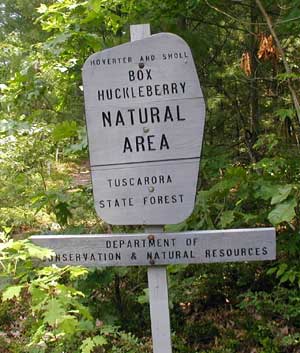
Near the entrance path there were several Rattlesnake-Weed plants as noted by their heavy purple-veined leaves at the base of a long flower stalk. At the top of the two feet long stalk are several bright yellow flowers in daisy-like fashion indicating that rattlesnake-weed, Hieracium venosum, is a member of the composite family.
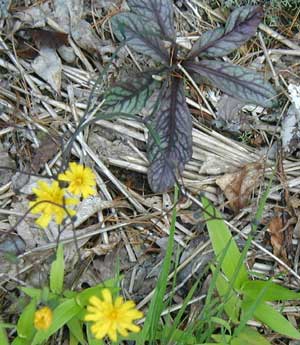
We were greeted by a nice display of Mountain Laurel on entering the easy half-mile trail. Mountain Laurel, Kalmia latifolia, is an evergreen shrub or small tree having large oval leaves that remind one of a rhododendron and is a member of the heath family.
Mountain laurel blossoms vary from nearly all white to pink. Each stamen appeared to be placed in a pocket of the blossom where some maroon color was transferred from the anther to the petals producing a deep red spot on the blossom. A most unusual flower!
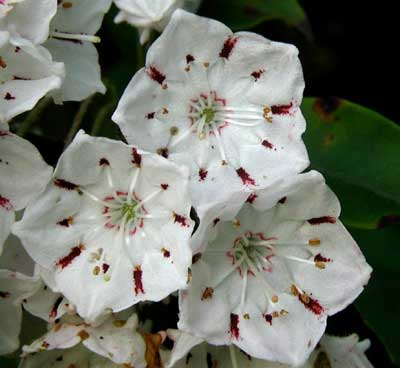
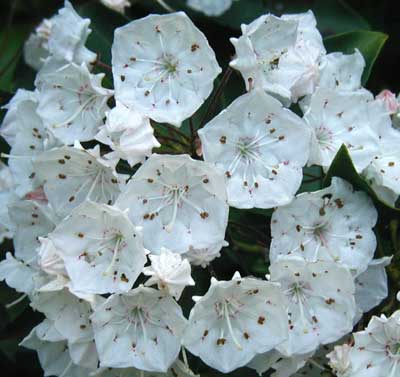
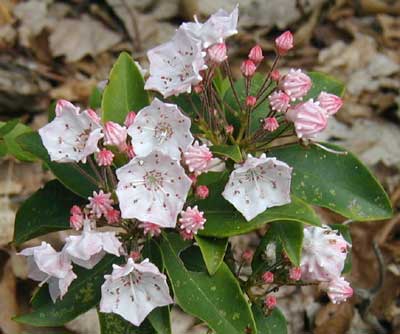
Check out these buds waiting to open – they look like beautiful dremel tool tips! Each has ten stamens wrapped inside the 10-parted flower.
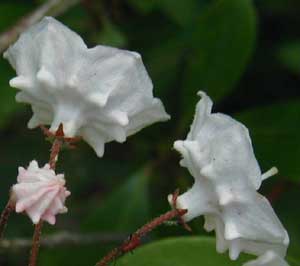
The rear of the Mountain Laurel flower has a unique shape.
The Box Huckleberry is also a member of the heath family and is a low-growing evergreen shrub. The leaves are about an inch long, oval in shape and have a glossy, leathery appearance, much like the boxwood that it is named after.
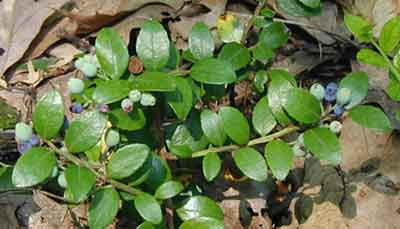
The Box Huckleberry has evergreen, leathery leaves and blue fruit.
Huckleberries can be mistaken for blueberries as their flowers and fruit are similar in appearance. The blossoms are white and bell-shaped. The box huckleberry fruit is small and contains several large seeds that make the fruit undesirable, except by grouse, turkey, and other wild creatures.
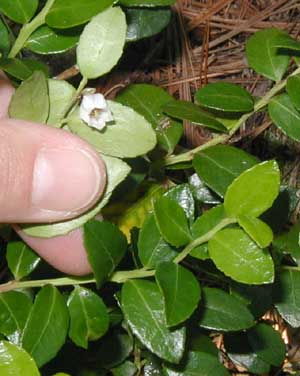
The blossom of the Box Huckleberry reminds one of blueberry blossoms, a close relative.
An interesting feature of this box huckleberry is that it is a single plant approximately 1,300 years old! The plant grows via rhizomes at a rate of only six inches per year. The size of the plant tells its age. A separate plant in the next county was estimated to be 13,000 years old – easily the oldest organism on the planet! Unfortunately, most of that large box huckleberry was destroyed in a road-building project for Route 22/322. Remnants of the original plant are said to be located on private property.
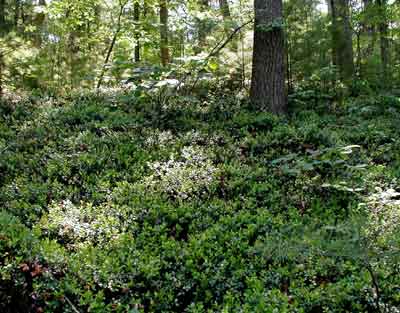
Part of the Box Huckleberry colony in the Tuscarora State Forest in Pennsylvania.
Box huckleberry is an endangered species that can only be found in 9 US states, with a most recent find of a new box huckleberry plant in the mountains of North Carolina.
As a matter of fact the Hoverter and Sholl Box Huckleberry Natural Area is designated as a natural landmark.
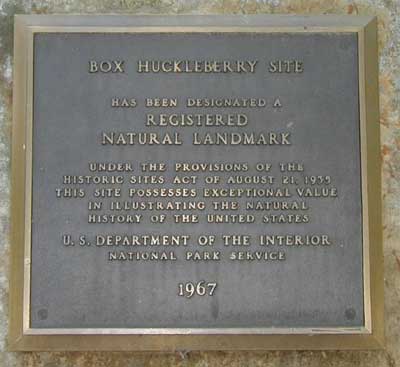
Natural Landmark Register Plaque on Monolith
This little piece of land was set aside to protect the rare Box Huckleberry in 1967!
Actually, this piece of land has been set aside to protect the box huckleberry since 1928 when it was donated to the Commonwealth of Pennsylvania, (then) Department of Forestry. It became a National Natural Landmark (conveying no additional legal status or special protection) in 1967.
Hello Stephen!
Thanks for updating these details. It’s nice to know the history of the Box Huckleberry Natural Area and that it has been a protected area for decades.
Hi
Those are really good
thank you very much for share it;
I love these kind of flowers!
Mountain Laurel is one of my favorites.
Dolly Sods WV has a trail wehre thousands of these are in bloom around the 1st of July.
Hey ForestWanderer –
It’s great to know that somebody else enjoys these beauties!
I’m a little surprised they don’t bloom until July in WV but we’re 300 miles to the north-east of that. Sounds like a great place to see with all those mountain laurels blooming.
Thanks for letting us know!
I was astonished to learn from this post that Box Huckleberry is rare as my local garden center here, in Cambridge, MA, is selling it. I have some questions about it they weren’t really able to answer, and I’d love to hear from someone who knows the answers. First, is this plant toxic to cats, and next, since it grows so slowly, can I put it in a container for a partially sunny, mostly shady area? I just love the smell of it. Thanks for your help.
It is surprising, Ashley. I wonder where is their source of Box Huckleberry and, indeed, is the plant really this species? There are lots of Gaylussacia native to the Americas.
I would try what you suggest if your container is deep enough. Do you plan on overwintering it inside?
Good luck! Let us know how it works out for ya!